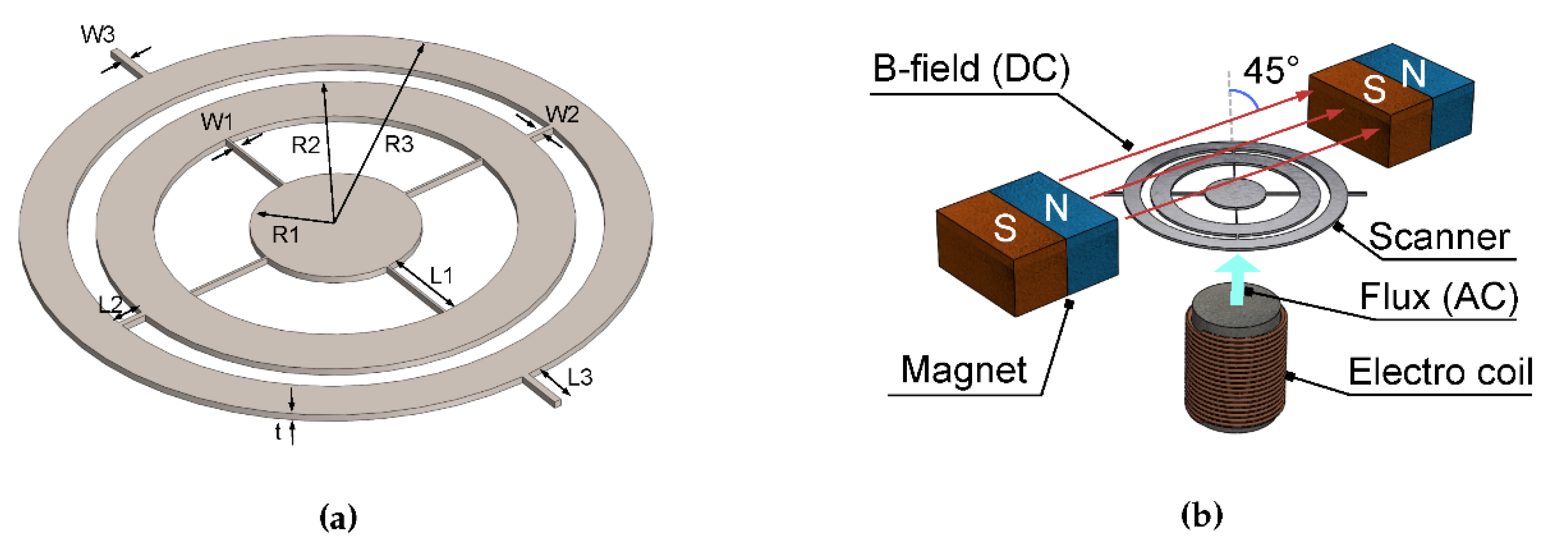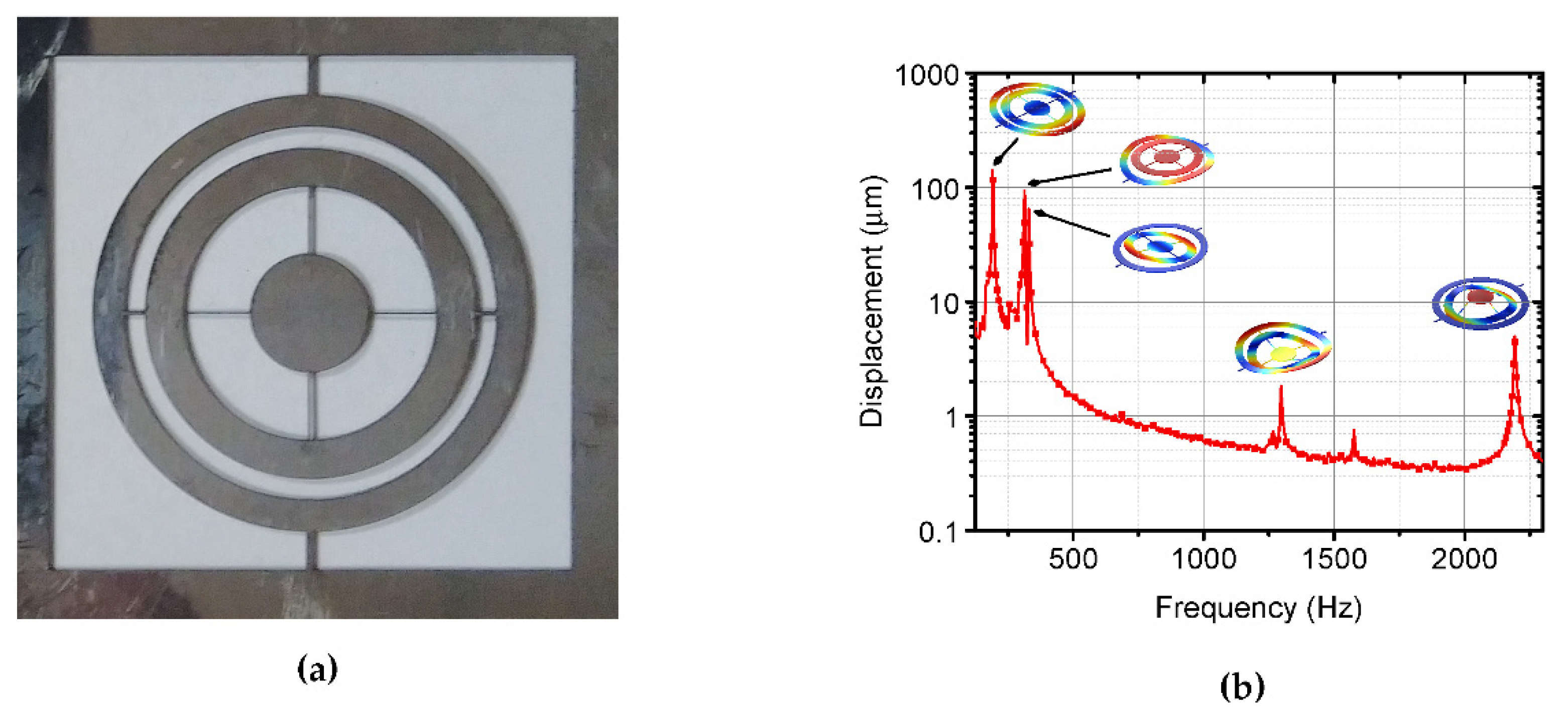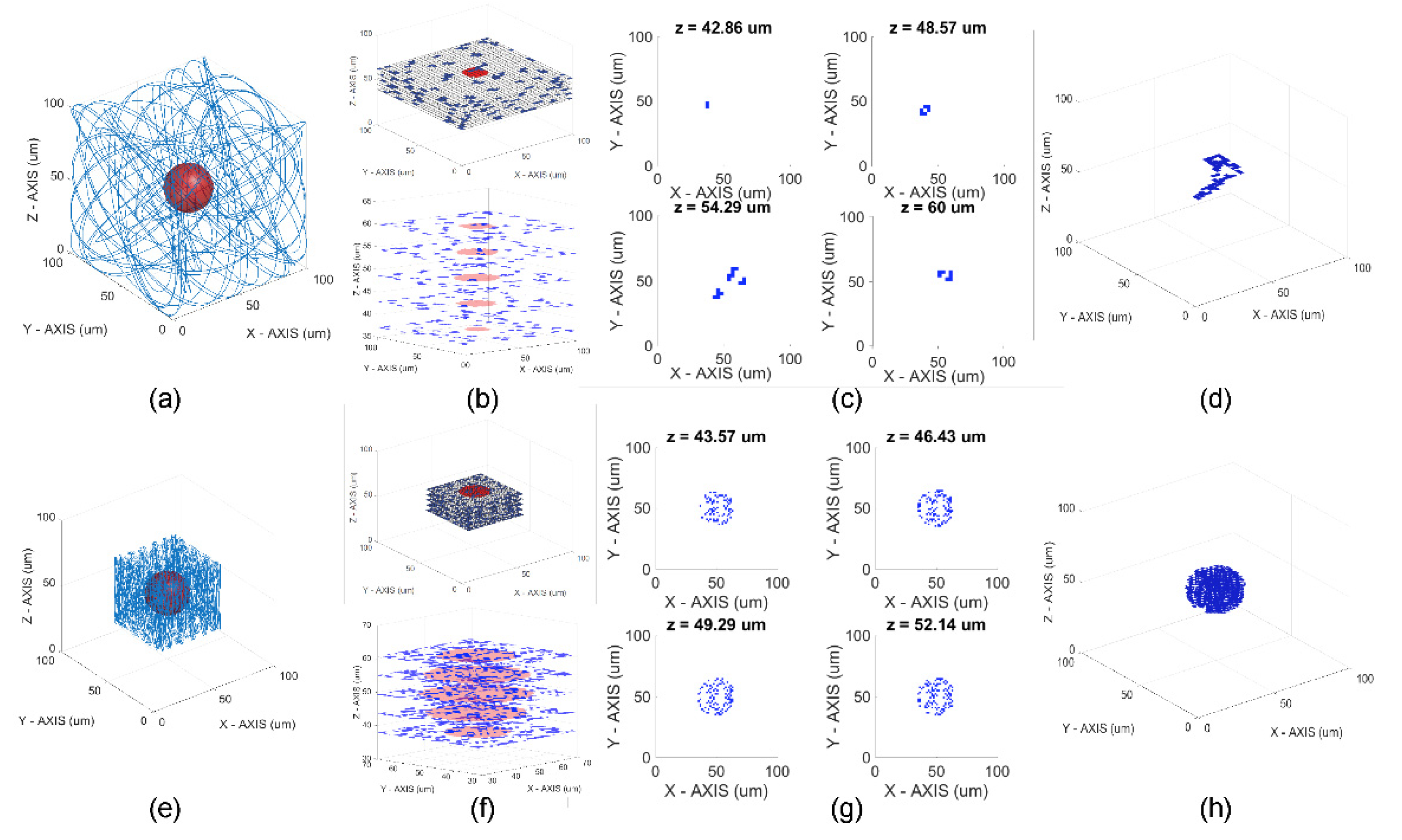Towards 3D Confocal Imaging with Laser-Machined Micro-Scanner †
Abstract
:1. Introduction
2. Mechanical Design
3. Experimental Results
4. 3D Scan Analysis
5. Conclusions
Acknowledgments
Conflicts of Interest
References
- Minsky, M. Confocal Scanning Microscope. Rapport Technique, US Patent 3,013,467, 19 December 1961. [Google Scholar]
- Oyman, H.; Icel, M.; Efe, B.; Gokdel, Y.; Ferhanoglu, O.; Yalcinkaya, A. A Laser-Machined Stainless-Steel Micro-Scanner for ConfocalMicroscopy. Proceedings 2017, 1, 564. [Google Scholar]
- Nagasawa, T.; Oguchi, Y.; Iwase, E. Operation of three-dimensional MEMS mirror by single superposed driving signal. Jpn. J. Appl. Phys. 2017, 56, 06GN12. [Google Scholar] [CrossRef]



| Parameter | Symbol | Value |
|---|---|---|
| Radius of the mirror | R1 | 9 mm |
| Radius of the first gimbal | R2 | 12.5 mm |
| Radius of the second gimbal | R3 | 16.5 mm |
| Width of the inner flexures | W1 | 0.14 mm |
| Width of the center flexures | W2 | 0.32 mm |
| Width of the outer flexures | W3 | 0.41 mm |
| Length of the inner flexures | L1 | 5 mm |
| Length of the center flexures | L2 | 1.5 mm |
| Length of the outer flexures | L3 | 2.8 mm |
| Thickness of the device | t | 0.4 mm |
| Young’s modulus | E | 200 GPa |
| Density | r | 7740 kg/m3 |
| Poisson’s ratio | n | 0.28 |
| FEM Results | LDV Results | |
|---|---|---|
| Slow Scan | 197 | 190 |
| Out-of-plane 1 | 315 | 313 |
| Fast Scan | 337 | 329 |
| Out-of-plane 2 | 1357 | 1296 |
| Out-of-plane 3 | 2196 | 2192 |
Publisher’s Note: MDPI stays neutral with regard to jurisdictional claims in published maps and institutional affiliations. |
© 2018 by the authors. Licensee MDPI, Basel, Switzerland. This article is an open access article distributed under the terms and conditions of the Creative Commons Attribution (CC BY) license (https://creativecommons.org/licenses/by/4.0/).
Share and Cite
Oyman, H.A.; Efe, B.C.; Icel, M.A.; Gokdel, Y.D.; Ferhanoglu, O.; Yalcinkaya, A.D. Towards 3D Confocal Imaging with Laser-Machined Micro-Scanner. Proceedings 2018, 2, 1067. https://doi.org/10.3390/proceedings2131067
Oyman HA, Efe BC, Icel MA, Gokdel YD, Ferhanoglu O, Yalcinkaya AD. Towards 3D Confocal Imaging with Laser-Machined Micro-Scanner. Proceedings. 2018; 2(13):1067. https://doi.org/10.3390/proceedings2131067
Chicago/Turabian StyleOyman, Hilmi Artun, Baris Can Efe, Mustafa Akin Icel, Yigit Daghan Gokdel, Onur Ferhanoglu, and Arda Deniz Yalcinkaya. 2018. "Towards 3D Confocal Imaging with Laser-Machined Micro-Scanner" Proceedings 2, no. 13: 1067. https://doi.org/10.3390/proceedings2131067
APA StyleOyman, H. A., Efe, B. C., Icel, M. A., Gokdel, Y. D., Ferhanoglu, O., & Yalcinkaya, A. D. (2018). Towards 3D Confocal Imaging with Laser-Machined Micro-Scanner. Proceedings, 2(13), 1067. https://doi.org/10.3390/proceedings2131067





